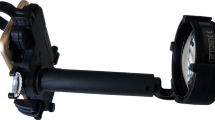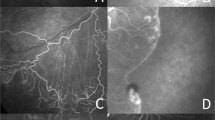Abstract
Objective
Most retinopathy of prematurity screening involves an ophthalmologist performing indirect ophthalmoscopy, which can be stressful to infants. The purpose of this study is to evaluate the safety profile (using cardiopulmonary events as an indicator) of imaging infants with a non-contact retinal camera compared to examining them using indirect ophthalmoscopy.
Study design
Prospective cohort study of 99 infants at a community hospital who were examined using indirect ophthalmoscopy and imaged using a non-contact retinal camera for retinopathy of prematurity. We evaluated the difference in the occurrence of safety events (i.e., clinically significant bradycardia, tachycardia, oxygen desaturation, or apnea) following the clinical examination versus retinal imaging.
Result
Safety events occurred after 0.8% (n = 1) of imaging sessions and 5.8% (n = 18) of clinical examinations (mean difference = −0.055 (p = 0.015), favoring imaging).
Conclusion
Retinal imaging with a non-contact camera was well tolerated and less stressful to infants compared to indirect ophthalmoscopy by an ophthalmologist.
This is a preview of subscription content, access via your institution
Access options
Subscribe to this journal
Receive 12 print issues and online access
$259.00 per year
only $21.58 per issue
Buy this article
- Purchase on Springer Link
- Instant access to full article PDF
Prices may be subject to local taxes which are calculated during checkout

Similar content being viewed by others
References
Fierson WM, American Academy of Pediatrics Section on Ophthalmology, American Academy of Ophthalmology, American Association for Pediatric Ophthalmology and Strabismus, American Association of Certified Orthoptists. Screening examination of premature infants for retinopathy of prematurity. Pediatrics. 2013;131:189–95.
Early Treatment For Retinopathy of Prematurity Cooperative G. Revised indications for the treatment of retinopathy of prematurity: results of the early treatment for retinopathy of prematurity randomized trial. Arch Ophthalmol 2003;121:1684–94.
Mehta M, Adams GG, Bunce C, Xing W, Hill M. Pilot study of the systemic effects of three different screening methods used for retinopathy of prematurity. Early Hum Dev. 2005;81:355–60.
Mukherjee AN, Watts P, Al-Madfai H, Manoj B, Roberts D. Impact of retinopathy of prematurity screening examination on cardiorespiratory indices: a comparison of indirect ophthalmoscopy and retcam imaging. Ophthalmology. 2006;113:1547–52.
Clarke WN, Hodges E, Noel LP, Roberts D, Coneys M. The oculocardiac reflex during ophthalmoscopy in premature infants. Am J Ophthalmol. 1985;99:649–51.
Rush R, Rush S, Nicolau J, Chapman K, Naqvi M. Systemic manifestations in response to mydriasis and physical examination during screening for retinopathy of prematurity. Retina. 2004;24:242–5.
Laws DE, Morton C, Weindling M, Clark D. Systemic effects of screening for retinopathy of prematurity. Br J Ophthalmol. 1996;80:425–8.
Slevin M, Murphy JF, Daly L, O’Keefe M. Retinopathy of prematurity screening, stress related responses, the role of nesting. Br J Ophthalmol. 1997;81:762–4.
Prakalapakorn SG, Freedman SF, Hutchinson AK, Saehout P, Cetinkaya-Rundel M, Wallace DK, et al. Real-world simulation of an alternative retinopathy of prematurity screening system: telemedicine grading of images obtained by a health care worker using a portable, non-contact digital fundus camera in Thailand: a pilot study. J Pediatr Ophthalmol Strabismus 2018; e-pub ahead of print 29 May 2018. https://doi.org/10.3928/01913913-20180327-04.
Prakalapakorn SG, Freedman SF, Hutchinson AK, Wallace DK, Stinnett SS, Riggins JW, et al. Evaluating a portable, non-contact fundus camera for retinopathy of prematurity screening by non-ophthalmologist health care workers. Ophthalmol Retina (in press).
Acknowledgements
SGP’s work was funded by NIH K23EY024268. The funding organization had no role in the design of the study, collection and analysis of data, or the decision to submit this report for publication.
Author information
Authors and Affiliations
Corresponding author
Ethics declarations
Conflict of interest
The authors declare that they have no conflict of interest.
Rights and permissions
About this article
Cite this article
Prakalapakorn, S.G., Stinnett, S.S., Freedman, S.F. et al. Non-contact retinal imaging compared to indirect ophthalmoscopy for retinopathy of prematurity screening: infant safety profile. J Perinatol 38, 1266–1269 (2018). https://doi.org/10.1038/s41372-018-0160-5
Received:
Revised:
Accepted:
Published:
Issue Date:
DOI: https://doi.org/10.1038/s41372-018-0160-5



